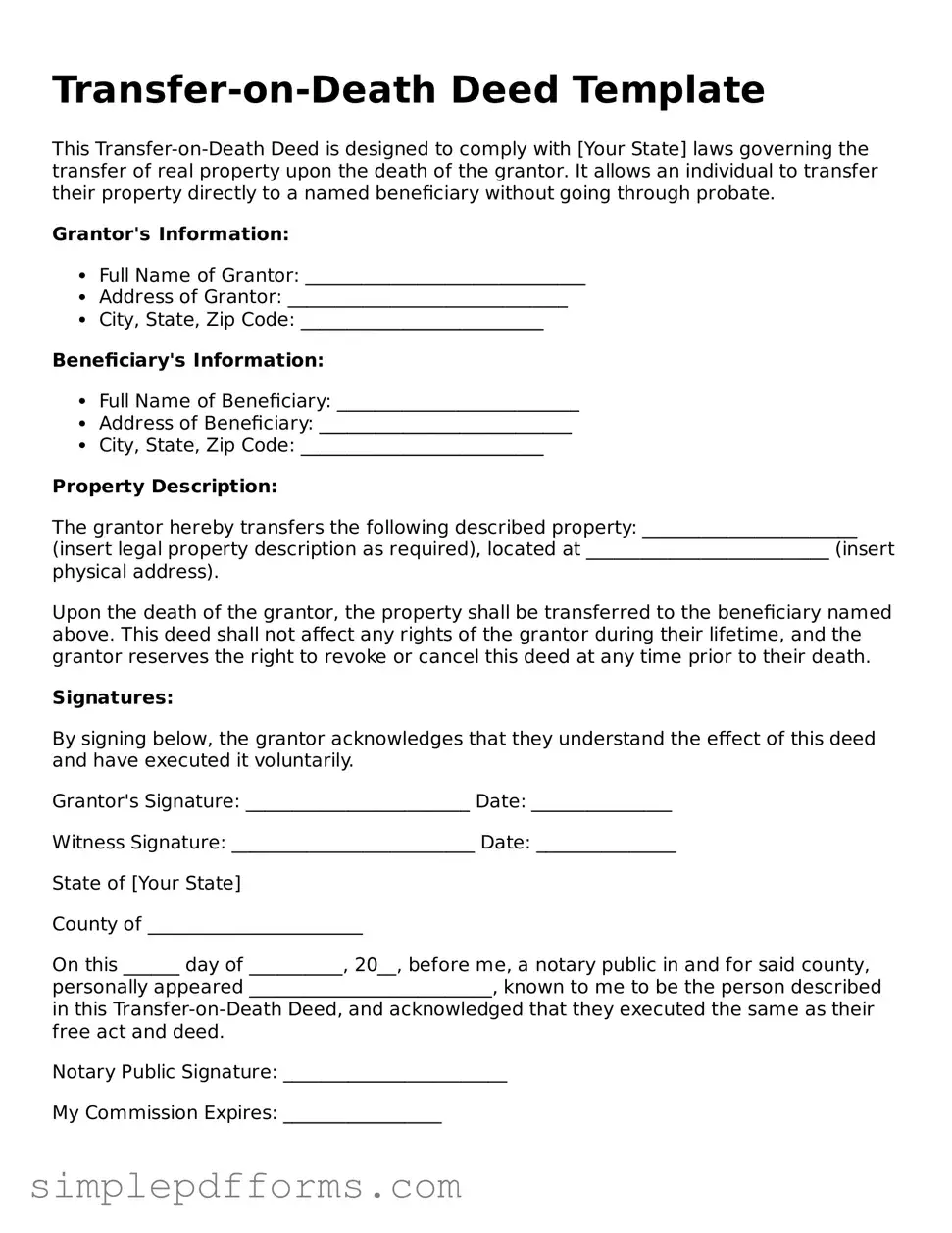Transfer-on-Death Deed Template
This Transfer-on-Death Deed is designed to comply with [Your State] laws governing the transfer of real property upon the death of the grantor. It allows an individual to transfer their property directly to a named beneficiary without going through probate.
Grantor's Information:
- Full Name of Grantor: ______________________________
- Address of Grantor: ______________________________
- City, State, Zip Code: __________________________
Beneficiary's Information:
- Full Name of Beneficiary: __________________________
- Address of Beneficiary: ___________________________
- City, State, Zip Code: __________________________
Property Description:
The grantor hereby transfers the following described property: _______________________ (insert legal property description as required), located at __________________________ (insert physical address).
Upon the death of the grantor, the property shall be transferred to the beneficiary named above. This deed shall not affect any rights of the grantor during their lifetime, and the grantor reserves the right to revoke or cancel this deed at any time prior to their death.
Signatures:
By signing below, the grantor acknowledges that they understand the effect of this deed and have executed it voluntarily.
Grantor's Signature: ________________________ Date: _______________
Witness Signature: __________________________ Date: _______________
State of [Your State]
County of _______________________
On this ______ day of __________, 20__, before me, a notary public in and for said county, personally appeared __________________________, known to me to be the person described in this Transfer-on-Death Deed, and acknowledged that they executed the same as their free act and deed.
Notary Public Signature: ________________________
My Commission Expires: _________________
